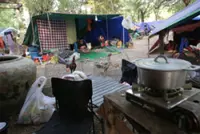After a break-in, your emotions may run high, but a calm and informed response can turn a traumatic experience into a situation you’re equipped to handle with confidence. Photo: 123rf.com
There's nothing quite as unsettling as the aftermath of a house break-in. The violation of your personal sanctuary, the destruction and loss can be overwhelming. You may feel as if your home, once a place of comfort and safety, has been irreparably tainted. The shock, anger, and confusion that follow can cloud your judgment, making it difficult to navigate the next critical steps.
However, it’s in these moments that your response matters most.
Already a subscriber? Log in
Save 30% OFF The Star Digital Access
Cancel anytime. Ad-free. Unlimited access with perks.





